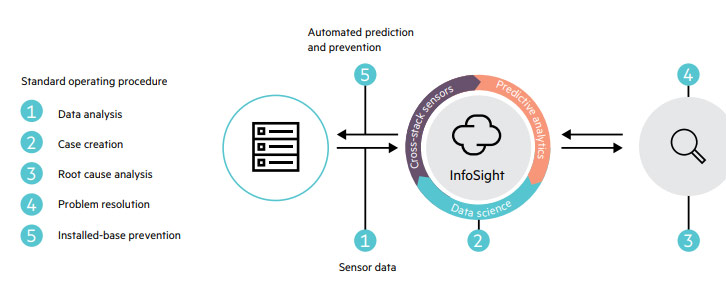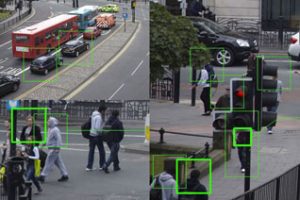Buzz around Machine Learning
There is a lot of buzz in the news lately relating to Artificial Intelligence, Machine Learning, Video Analytics and Facial Recognition. The airline industry is just one area example of this. In fact, the Orlando Airport announced last summer that facial recognition technology will be used on all international travelers.
Travelers from Boston’s Logan International Airport to the Caribbean islands on Jet Blue started a trial program to use Facial Recognition software that acts as a boarding pass. This is the first trial between an airline and Customs and Border Protection. Other airports are also running pilot programs.
So, what does this all mean?
Recently, I heard about an Artificial Intelligent Robot that was taught to take on and beat the best poker players in the world. The first attempts, the robot lost. After the robot spent a year learning, it was able to beat the best players in the world.
We are still in the very early stages of AI and machine learning. For example, the chess playing robot has learned how to win the game of chess. If another occurrence happened like a fire breaking out, the robot would not know what to do. A human would be able to process the information about the fire and determine they should get out. The Robot would still be playing chess.
What I am trying to say is as humans, we have the ability to take on so much more information and process that information based on a lifetime of learning. Machine learning, or AI is still in it’s infancy by comparison.
HPE and Machine Learning
HPE is utilizing Machine Learning with HPE InfoSight to improve customer support. Infosight has been supported with the Nimble and 3PAR storage platforms and recently added support for the Proliant Servers. Look for additional platforms to be supported in the future.
Using HPE Infosight, HPE has been able to prevent downtime on the Nimble storage platform using the InfoSight Predictive Analytics. HPE recently published a white paper titled HPE Nimble Storage Sets Six Nines Availability Standard. This standard of system availability is a result of using the predictive analytics along with machine learning.

InfoSight collects and correlates data from every storage array implemented across their install base, enabling global visibility and learning. This allows InfoSight to predict potential issues before they happen, before they cause outages for customers. This in turn provides a better support experience for the customer.
This capability will also be available for the Proliant, BladeSystem, Synergy and Apollo systems. InfoSight for Servers will proactively collect and analyze each servers Active Health System data to identify configuration, health and performance information, then recommend solutions. It will also provide warranty and support status. All this information is consolidated and provided through a global dashboard.
Video Analytics and Facial Recognition
Machine learning can also be utilized in Video analytics and facial recognition. As stated previously, the airline industry is looking at using facial recognition software to replace the boarding pass.
There are also several other use cases. Facial recognition is beginning to be implemented in law enforcement, corrections facilities, stadiums, schools, casinos, along with the airports and other transportation industries. Where this goes over the next 2 years is going to be very interesting.
Artificial Intelligence and Video analytics can be used in several ways. Here are just a few:
- Improve traffic flow
- Detect a firearm
- Determine if a person is in a location they shouldn’t be in
- Determine if a person is underage
- Detect aggressive behavior
The use cases are limitless as people look at what can be done and has this technology become more mature.
Several things we have noticed that make video analytics a reality is better quality cameras, the ability to do real time alerting, the integration with mobile devices, scalability of the software, accuracy of recognition and above all, the privacy of the individual.
Hold on, this is going to be interesting.
Video Analytics and Theft
Imagine a manufacturing company with an 80,000 square foot plant, multiple exits and shipping docks, 200 employees and several products which are as small as the palm of a hand or as big as the flatbed of a pickup truck.
Obviously a lot of elements to this scenario. Now imagine there has been theft which has been taking place during and after hours of operation. This threat has been going on for at least six months and product loss has started to affect cost of goods.
This is where video analytics comes into play. Now, there might (actually should) be video cameras set up throughout the facility, but they are missing the video analytics component. With video analytics, the possibilities of detection are endless and evolving every day.
Anomaly Detection
The specific package for this scenario could be “Anomaly Detection.” Anomaly detection has the ability to pick up on something that is not deemed normal in any environment. For example, if all employees are wearing uniforms, but there’s one individual who is not wearing a uniform and is hanging around an exit door or shipping document, this would send an alert for security to investigate.
Or another example would be if running wasn’t allowed in the facility, and cameras show two or three individuals (wearing uniforms) running towards an exit door. Is there a fire, emergency or are they actually trying to steal something? Another possibility is there is supposed to be 7 employees in a designated area and there are only 6 or more than 7, anomaly detection has the ability to send out an alert to specific personnel to investigate the abnormal activity.
Facial Recognition
 Another package for this scenario could be “Facial Recognition.” Maybe the facility doesn’t have uniforms for its employees, but through the use of Facial recognition, the organization knows exactly who’s working for the company and where their work-station is. Each morning or evening when employees walk, facial recognition could identify all the certified employees. However, what if one person wasn’t identified. Who is he/she? Where is he/she? What is he/she doing? Again, another alert could be sent to Security to investigate.
Another package for this scenario could be “Facial Recognition.” Maybe the facility doesn’t have uniforms for its employees, but through the use of Facial recognition, the organization knows exactly who’s working for the company and where their work-station is. Each morning or evening when employees walk, facial recognition could identify all the certified employees. However, what if one person wasn’t identified. Who is he/she? Where is he/she? What is he/she doing? Again, another alert could be sent to Security to investigate.
Maybe there’s a specific section of the plant where the majority of theft is taking place. Facial Recognition could identify the employees who have that work station and Anomaly detection might be able to identify abnormal activity from a specific employee or employees.
The options and scenarios are endless and over time, video analytics has the ability to self-learn. By Machine Learning, the ability to identify abnormal activities will continue to multiply and also identify exactly who is supposed to be (and not supposed to be) where and when.
This is just one example where video analytics could be useful in so many ways; safety, cost-efficiency, theft prevention, security, etc.
More Scenarios
A casino would be able to identify when a ‘high-roller’ walks into their establishment. The concierge would greet that person with the ‘VIP’ treatment (i.e. favorite beverage, favorite table, etc.). It would also be able to identify abnormalities which could spot card-counters or cheating in anyway. Underage gambling may also be reduced due to facial recognition. Addicted gamblers could be removed from the building if they put themselves on a self-ban list.
An issue at the forefront right now and probably the most important issue at hand is children’s safety in schools. Anomaly detection would be able to detect if a person should or should not be in a specific location of the school. Facial recognition could identify whether the person is a student, employee or security guard. If not, alerts can be executed and initiate all sorts of preventative measures (classroom doors auto-lock, 911 notified, security guards sent to the specific area, etc.).
What about school buses? Facial recognition would be able to identify and count the number of children on a specific bus. If John or Jane Smith is not on the bus, an alert would be notified. Anomaly detection could identify bullying or fighting or any abnormal behavior taking place on the bus. What if a random person tried to board the bus?
Again, the options are endless. There will be a lot of learning from a human standpoint and a machine learning standpoint. As listed here, I think we all would agree there are certain areas which need to be implemented as soon as possible.

